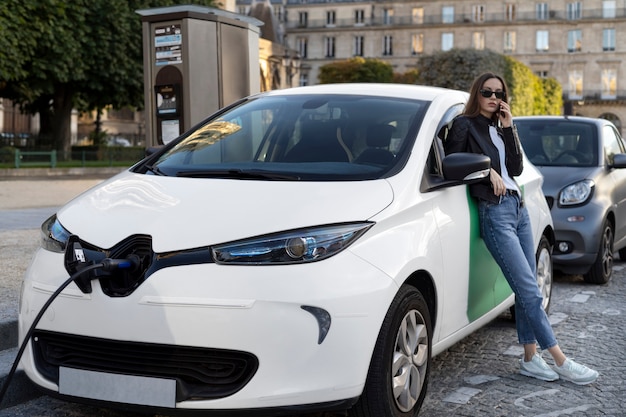
You finally receive the notification that the electric car you ordered months ago is ready for pickup. Excitedly, you go to collect it and get behind the wheel. As you start driving, you hear an unexpected noise. You were anticipating the peaceful silence of a fully electric vehicle, but instead, you notice a strange sound that resembles engine noise.
Interestingly, this is both what you think it is and isn’t at the same time. Automakers have recognized that we, as humans, have grown accustomed to the engine’s rumble, often associating it with performance and quality. So what have they done? They are pumping fake engine noises through the speakers in your electric car.
It might sound a bit silly, but it’s true. Not every EV manufacturer does this, but a significant number do, and they fall into two main groups.
The first group tries to imitate real engine sounds. For example, the Mustang Mach-E changes its sound based on the drive mode you select. The Dodge Hornet R/T also adopts this approach, using specific speakers to make the noise seem like it’s coming from a precise direction. Recently, the Hyundai Ioniq 5 N made news for its fake engine sounds designed to mimic the noise of a rally car.
The second group of fake sounds aims to create a more futuristic atmosphere. Mercedes-Benz, for instance, has garnered attention for producing a range of unusual noises with vehicles like the EQS when you hit the accelerator.
These fake noises are meant for the driver’s enjoyment. It’s important to note that these are different from the external sounds cars make to alert pedestrians, which are required by law.
So why do automakers do this? It appears they want to recreate the experience of driving a traditional gas-powered vehicle, and fake noises are just part of the efforts. Toyota, for instance, is developing a simulated stick shift that will let drivers “change gears,” and some reports suggest the system might even simulate stalling if gears are shifted incorrectly. This seems a bit extreme.
It feels like a big game of pretend. What’s the difference between hearing fake noises and shifting fake gears in an EV and doing the same in a racing video game? Perhaps a more lifelike simulation?
On the bright side, you can usually disable these fake sounds, although some exceptions exist. But why are these features enabled by default? In the future, will we be driving self-driving pods with fake engine sounds from a bygone era?
There’s nothing wrong with missing the experience of a gas-powered car and wanting to simulate that in your new EV. If that’s what you enjoy, go for it — you’re free to imagine you’re driving a race car.
However, these default settings feel a bit silly to me, especially when I’m driving with others. As someone who often gets to test drive review cars, my wife never misses an opportunity to mock any electric car that doesn’t fully embrace the silence that should come with the EV experience.
In essence, the push for fake engine noises stems from the perception that electric cars lack character and personality, feeling too much like lifeless appliances.
While I understand this viewpoint, the reliance on fake sounds seems like a lazy solution. Instead of genuinely innovating and offering unique features, automakers are leaning on simulated experiences. This isn’t necessarily holding back EVs, but it does feel like a weak response to criticisms that electric cars are dull.
I doubt these features will persist long-term, aside from among enthusiasts. Most EV buyers want a straightforward, quiet car, and it seems likely that automakers will increasingly meet this demand. Hopefully, they will continue to innovate and enhance the driving experience in more meaningful ways too.